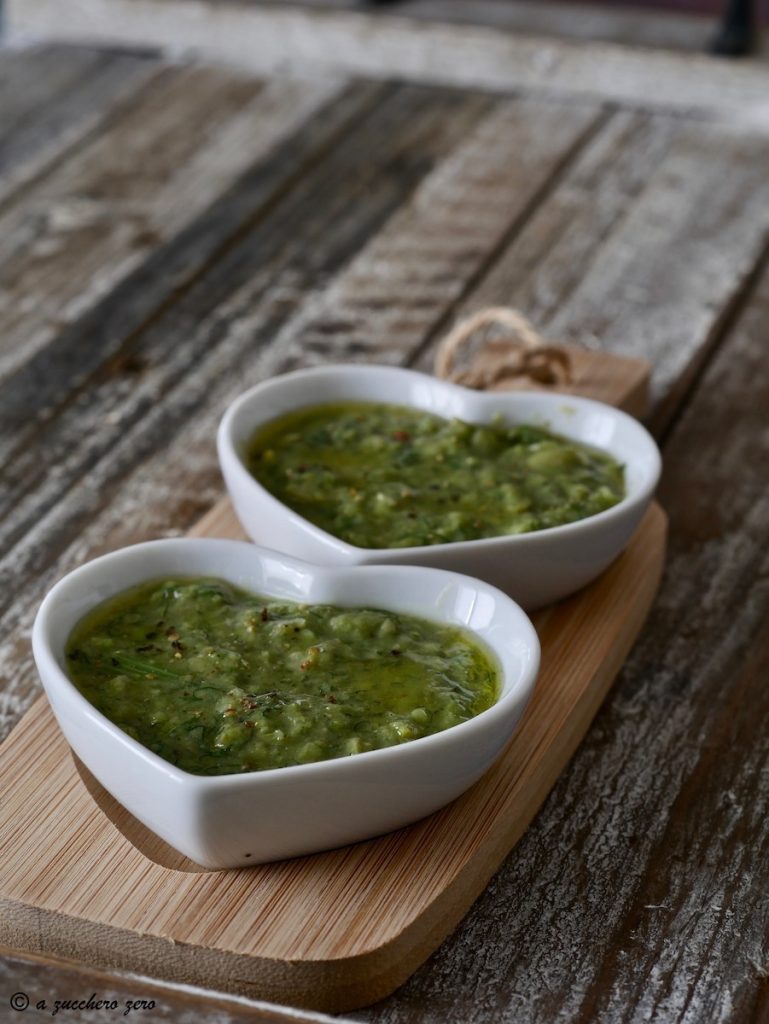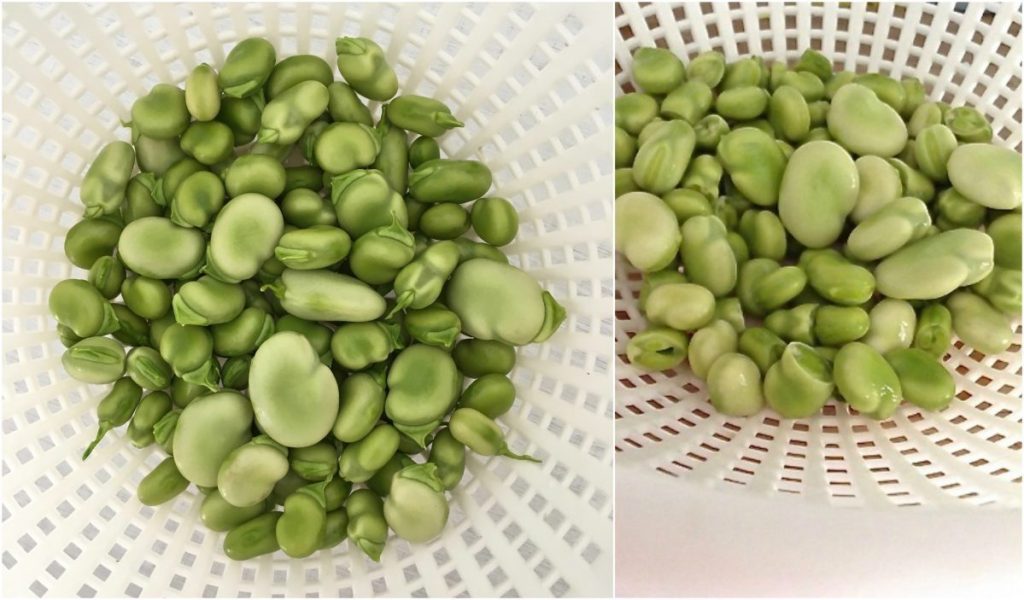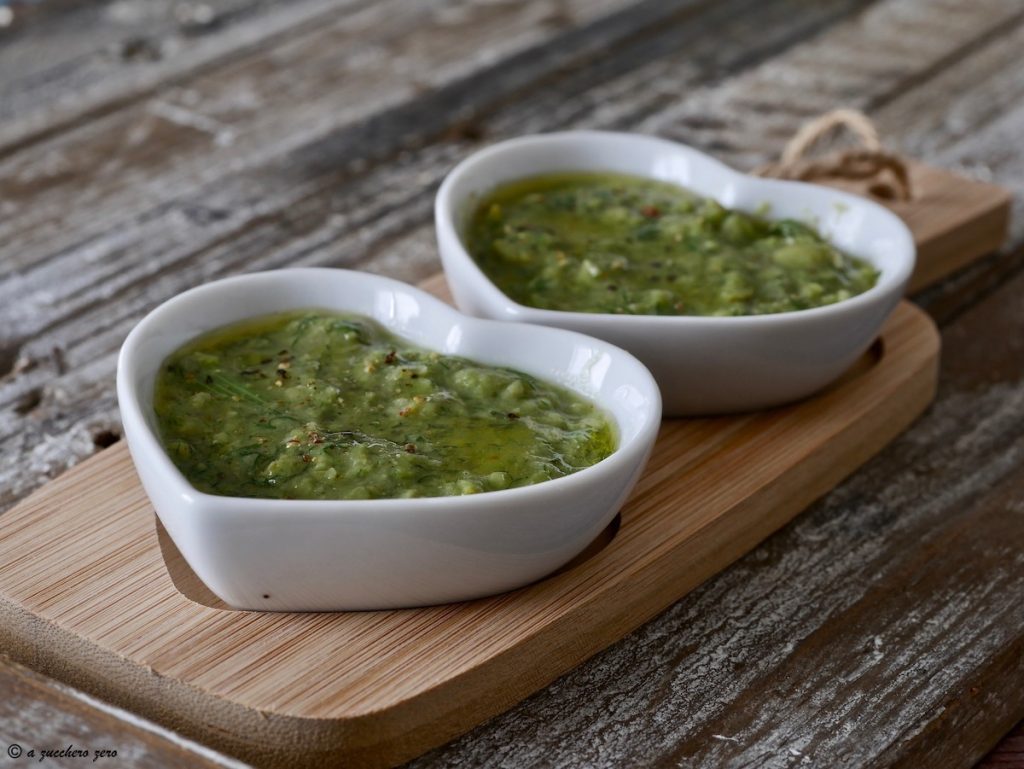Today we prepare the fresh fava bean purée flavored with wild fennel as Sicilian tradition dictates.
The fresh fava bean purée is also a base recipe to be enjoyed as a soup or used for preparing appetizers, first and second courses.
The fresh fava beans are ‘pinched’ by removing the top part of the skin, leaving them exposed.
Grandma Francesca pinched them with her fingers, with agile movements… I, being less skilled, use a knife to cut off a piece of the bean!
… after being pinched, they are cooked with onion [or shallot].
Cooking them further creates a sort of purée that in Sicilian we call macco: a soup, broth, or velouté with a more or less coarse texture.
It’s better to use small and tender fava beans.
If necessary, remove the skin if too fibrous and/or finish with an immersion blender.
Can diabetics eat fava beans?
The glycemic index of fava beans [GI 40] is higher compared to other legumes and increases with cooking; thus, in cases of diabetes cooked fava beans should be consumed in moderation [and always according to your dietary plan, ours includes them].
From Accu-Check diet meter: fava bean purée
• uncooked portion weight 80 g;
• cooked portion weight 200 g;
content:
• Kcal 272.8;
• carbohydrates 43.8 g;
• proteins 21.7 g;
• fats 2.4 g.

- Difficulty: Easy
- Cost: Medium
- Preparation time: 20 Minutes
- Portions: 2 People
- Cooking methods: Stovetop
- Cuisine: Italian
Ingredients
- fresh fava beans (for 2 people)
- 1/2 shallot
- 1/4 cup water
- as needed water
- as needed wild fennel (blanched)
- 1 pinch salt
- 1 pinch mixed peppercorns (with grinder)
- 1 drizzle extra virgin olive oil (raw)
Tools
- 1 Immersion Blender with cup
Preparation
Fresh Fava Beans Raw and Cooked Weight
From one kilogram of fresh fava beans [weight with pod] I obtained 375 g of fresh fava beans [without pod].
The guidelines for a healthy diet indicate the following standard portions:
• fresh, soaked or canned legumes 150 g;
• dry legumes 50 g.
⇒ remember that weights are personal.
Extract the fresh fava beans from the pod.
‘Pinch’ the fava beans by removing the stem, leaving them exposed at the top.
If you’re not skilled at doing it with your fingers like the grandmothers, use a knife to cut off a small piece of the bean!
Wash the fava beans under running water.
Peel the shallot, trim the ends, and slice it into rings.
Place the shallot in a hot pan and let it wilt for a few seconds.
Add 1/4 cup of water and wait for it to sauté.Add the fava beans to the pan and brown them.
Add more water until it covers a finger above the beans.Fava beans with skins or without?
To each their own… we don’t mind them and they add fiber!If desired, once the fava beans are blanched, turn off the heat and use kitchen tongs to remove the skins.
Add the previously blanched wild fennel and, if necessary, add more water.
Resume cooking.
Let it continue for 30 to 60 minutes on low heat, ensuring:
• checking the consistency of the fava beans;
• adding more water if necessary;
• stirring to prevent the beans from sticking to the bottom of the pot as they dry.Cooking time varies depending on:
• the size and freshness of the fava beans;
• the desired consistency.Cook until you achieve a more or less coarse purée.
Add salt and grind the pepper.
If you want a finer consistency, blend with an immersion blender.
Plate.
Add a drizzle of oil.
Grind some more pepper.Your fresh fava bean purée is ready.
Enjoy your meal!

The combination with pasta, rice, or other cereals allows better absorption of legume proteins.
The cereals in these dishes compensate for the amino acids missing in legumes, allowing for a complete amino acid pool.
Choose preferably whole grains.
For more information: how to combine legumes in the diet.
Notes
Hyperglycemia, prediabetes and diabetes.
Here you can find dedicated recipes.
Remember:
• start the meal with a generous portion of vegetables [raw or cooked];
• a balanced meal must contain all nutrients: carbohydrates, proteins, fats & fibers;
• always prepare it respecting the proportions and combinations indicated in your meal plan.
***
DO NOT COPY AND PASTE MATERIAL FROM THE BLOG in general and specifically ON SOCIAL PROFILES AND GROUPS [photos, ingredients, procedure – NOT EVEN IN SUMMARY FORM]: it is correct to share your photos of the executed recipes indicating the source, that is linking the blog where the entire recipe can be read.
FOR COPYRIGHT REASONS AND ALSO FOR THE HARD WORK BEHIND IT.
Thank you.

